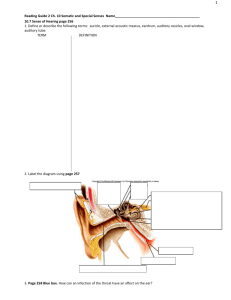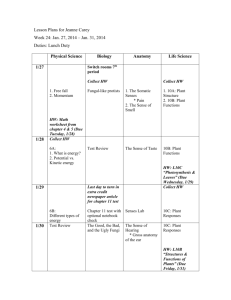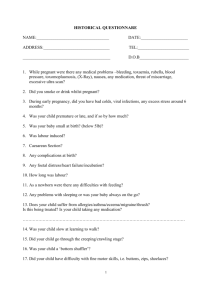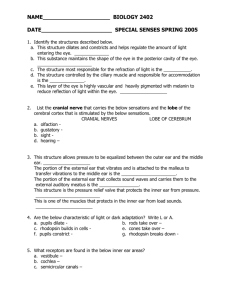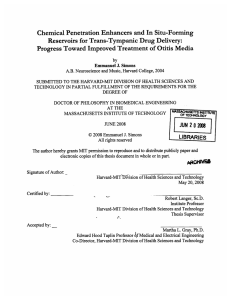Exam 1 Review: The Nervous SYStem
advertisement
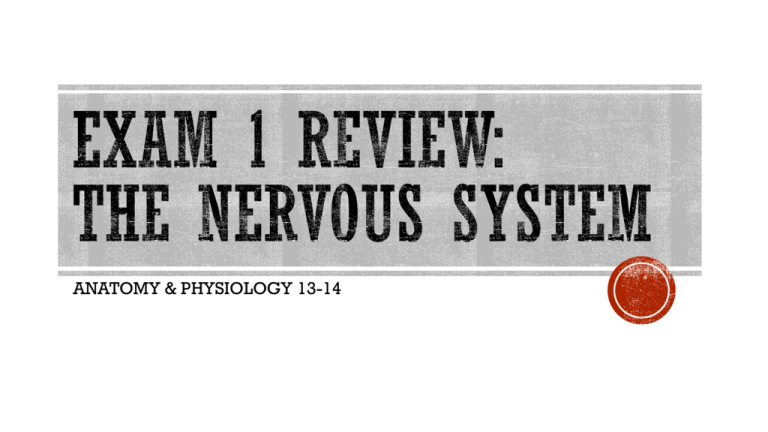
ANATOMY & PHYSIOLOGY 13-14 Patient #1 is a 45 year old female, reporting symptoms consistent with an aneurysm in the carotid artery (i.e. throbbing sensation in neck, numbness of neck muscles). Which technology would be most effective: A) Computer Assisted Tomography B) Electrocardiogram C) Endoscopy Patient #2 is a 57 year old male, who has suffered an injury to his back while lifting. Symptoms include sharp pains in the center of the lower back? Which technology would be the most efficient and cost effective: A) Endoscopy B) Magnetic Resonance Imaging C) Positron Emission Tomography? Patient #3 is a 27 year old pregnant female whose amniocentesis (i.e. test of the fluid around the fetus) shows the potential for neural tube birth defects such as spina bifida. Which technology would be the most efficient and cost effective? A) Computer Assisted Tomography B) Electrocardiogram C) 3D Ultrasound? 4) Patient #4 is a 5 year old male whose parents are reporting issues with tiring easily, difficulty ascending or descending stairs and learning disabilities. What is your preliminary diagnosis? A) Amyolateral Sclerosis B) Duchenne-Type Muscular Dystrophy C) Multiple Sclerosis D) Parkinson’s Disease E) Tay-Sachs Disease Patient #5 is a 20 year old female reporting muscle spasms in her feet, difficulty urinating, pronounced fatigue and occasional “pins and needles” sensations in her extremities. What is your preliminary diagnosis? A) Amyolateral Sclerosis B) Duchenne-Type Muscular Dystrophy C) Multiple Sclerosis D) Parkinson’s Disease E) Tay-Sachs Disease #7-9) To which division of the nervous system, peripheral (PNS)or central (CNS), do each of the following structures belong? Write your answer in the space provided. ____________ #7) Rods and Cones ____________ #8) Broca’s Area ____________ #9) Medulla Oblongata Which division of the peripheral nervous system, somatic (SoNS) or autonomic (ANS), would regulate each of the following aspects of human physiology? ____________ #10) Speech ____________ #11) Relaxation of the frontalis muscle in the face ____________ #12) Release of the hormone gastrin when food is ingested #13-15) Which division of the autonomic nervous system, sympathetic (SNS) or parasympathetic (PSNS), would regulate each of the following aspects of human physiology? __________ #13) Bradypnea (i.e decrease in breathing rate) __________ #14) Release of adrenaline __________#15) Decreased rate of defecation _________#21) Which of the following is NOT a structure utilized to protect the brain? A) Cerebrospinal Fluid B) Cranium C) Dura Mater D) Pia Mater E) Transverse Fissure _________#22) Which of the following senses tends to utilize chemoreceptors that are not polymodal (i.e. meaning that they only respond to one specific type of sensory input)? Mark as many as apply. A) Auditory B) Gustation C) Olfaction D) Opthalamoception E) Tactile _________#23) Which of the following statements is correct regarding the anatomy and physiology of the mammalian eye? A) The tapetum reflects like inside the aqueous humor, allowing for more stimulation of cones B) The highest concentration of cones is in the periphery (outside edges) of the retina C) The Zonules of Zinn are involved in changing the shape of the lens D) Most refraction/magnification of light waves occurs in the vitreous humor E) The region surrounding the pupil is called the fovea centralis _________#24) In which region of the ear are vibrations changed into pressure waves of fluid? A) Outer Ear B) Middle Ear C) Inner Ear D) Temporal Lobe E) Eustachian Tube _________ #25) Which of the following structures would not be myelinated? Efferent Neurons Afferent Neurons Spinal Cord Cerebral Cortex Medulla Oblongata #51) Trace the passage of light through the eye (from ventral to dorsal) including the following terms in your answer: Aqueous humor, Cornea, Lens, Retina, Vitreous humor #52) Describe energy is transduced/transformed as one travels from outer ear to inner ear. Include the following terms in your answer: external auditory meatus/auditory canal, tympanic membrane, ossicles, oval window, cochlea, organ of corti #53-55) Takifugu rubipres is the second most lethal animal on earth due to its ability to produce Tetrodotoxin (TTX). TTX binds to the sodium gated channels of efferent neurons, leading to paralysis of the diaphragm and intercostal muscles associated with breathing. Explain why TTX’s ability to bind to said sodium gated channels leads to paralysis of these muscles. In your answer, explain how these channels function normally and why blockage of these channels would result in an inability to contract the muscles necessary for breathing.

